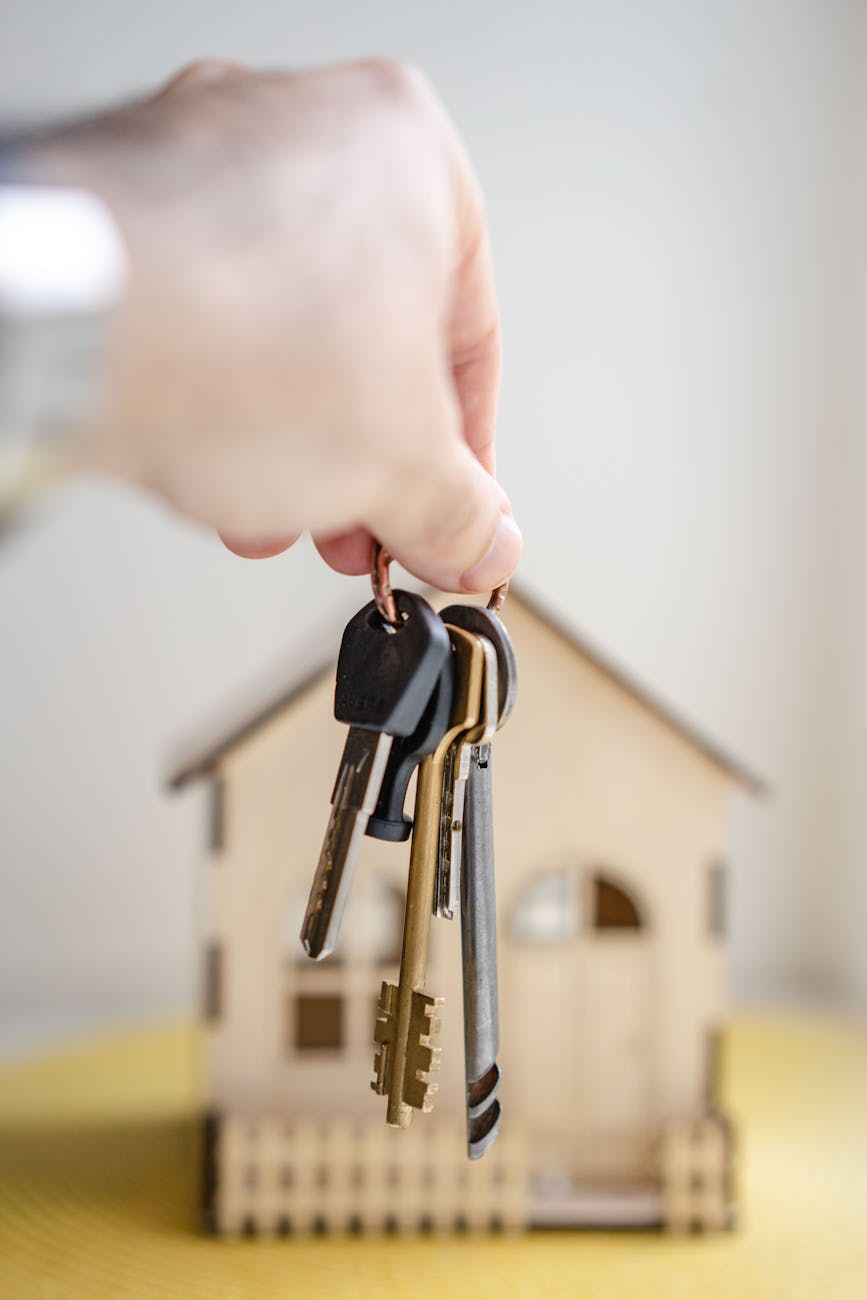
I offer sustainable design and construction services as a construction…
Read Next
In the quest for sustainable development, one of the most pressing challenges we face is ensuring access to affordable housing without compromising environmental and the social integrity. With the escalating concerns surrounding climate change, resource depletion, and economic disparities, the need for sustainable and affordable housing has never been more urgent. However, the question arises: Is it a feasible goal, or merely an idealistic aspiration?
Sustainable housing aims to provide a more positive environmental impact throughout its lifecycle, from construction to occupancy and eventual deconstruction or reuse. It emphasizes energy efficiency, utilization of renewable resources, reduction of waste, and incorporation of eco-friendly materials. On the other hand, affordable housing strives to provide shelter that is within the financial means of low to moderate-income individuals and families.
 PIN IT
PIN ITCombining these two objectives poses significant challenges, primarily due to the perceived higher costs associated with sustainable building practices. Traditionally, sustainable construction methods and materials have been more expensive upfront, deterring developers and homeowners from embracing them, especially in affordable housing projects where budget constraints are stringent.
However, recent advancements in technology, coupled with increasing awareness and regulatory incentives, have started to bridge this gap. Innovative approaches such as passive solar design, green roofs, rainwater harvesting, and modular construction have demonstrated the potential to reduce both construction and operational costs while enhancing sustainability.
 PIN IT
PIN ITBuilding strategies that can provide sustainable and affordable housing
Energy Efficiency through low tech passive solar design concepts
Passive solar design is a fundamental component of sustainable and energy-efficient architecture, leveraging the natural elements of sunlight and heat to minimize reliance on artificial heating and cooling systems.

Here are key ways in which passive solar design contributes to energy efficiency:
- Optimal Building Orientation: Passive solar design involves positioning buildings to maximize exposure to the sun’s rays during winter months while minimizing direct sunlight penetration during the summer. This orientation helps regulate interior temperatures without relying heavily on mechanical heating or cooling.
- Proper Building Envelope: A well-insulated building envelope, including walls, roofs, and windows, is essential for passive solar design. High-performance insulation materials and strategic placement of thermal mass elements help retain heat during colder periods and prevent excessive heat gain in warmer months, reducing the need for artificial heating and cooling.
- Daylighting: Passive solar design prioritizes natural daylighting, strategically placing windows and skylights to maximize interior illumination. This not only reduces the need for artificial lighting but also enhances occupant comfort and well-being by providing a connection to the outdoors.
- Solar Heat Gain: South-facing windows are a hallmark of passive solar design, allowing for maximum solar heat gain during winter months when the sun’s angle is lower. This heat is absorbed by thermal mass materials such as concrete floors or masonry walls, storing and releasing it gradually to maintain a comfortable indoor temperature.
- Natural Ventilation: Passive solar design often incorporates natural ventilation strategies, such as operable windows, vents, and thermal chimneys, to facilitate airflow and regulate indoor temperatures. Cross-ventilation and stack effect principles help expel hot air during summer and draw in cooler air from shaded areas, reducing the need for mechanical cooling.
- Shading Devices: Overhangs, awnings, and louvers are utilized in passive solar design to provide shading and prevent excessive solar heat gain during peak sunlight hours in summer. These shading devices help regulate indoor temperatures and minimize the reliance on air conditioning systems, contributing to energy savings.
- Climate-Specific Design: Passive solar design principles are adaptable to different climatic conditions, allowing architects to tailor strategies based on local climate data and environmental factors. By optimizing design features to suit specific geographic regions, buildings can achieve maximum energy efficiency and occupant comfort year-round.
Biophilic Design Integration
Biophilic design has played another key role in developing sustainable and affordable housing. Sustainable buildings report an average of 12% lower maintenance costs than their conventional counterparts. Lower maintenance expenses lead to long-term savings for homeowners and allow landlords to offer more flexible leasing options.
Here are some biophilic design features making an impact:
- Mixed-use areas: Instead of filling an environment with artificial structures, mixed-use areas allow humans and nature to coexist. These areas leave a smaller environmental footprint and minimise building costs.
- Natural materials: Houses that emulate their surrounding environments with natural materials such as stone, bamboo, cork and reclaimed wood are more durable than buildings with cheap and artificial materials. Long-lasting, durable housing is more affordable in the long run.
- Eco-friendly features: Cool roofs, low-emitting windows, low-flow toilets and other eco-friendly features are integral parts of biophilic design. These are the main parts responsible for lowering maintenance costs.

Modular Buildings
Another effective way to prioritise sustainability and affordability simultaneously is through modular buildings. This strategy involves building parts of a house off-site, in a controlled setting – typically a warehouse – and shipping them to the site later.
 PIN IT
PIN ITModular building helps the environment by significantly reducing material waste through improved inventory control, promoting the use of recycled materials and deploying sustainable transportation methods. It can also be up to 50% faster than conventional residential construction and save up to 14% of the project’s overall costs.
Use of renewable energy on a national scale
Renewable energy sources also make sustainable and affordable housing more practical. Solar, wind and geothermal power are the three most effective alternatives for minimising energy expenditure and making housing more cost-effective. They also directly improve the quality of life for the surrounding community.
For example, implementing solar energy on a national scale could save 25,000 lives every year by eliminating fossil fuel emissions and improving air quality. It would also make homes more affordable by cutting utility costs and making everyday appliances more efficient, but the direct impact on people’s well-being is the most important benefit.
Collaborations, partnerships and financing
Moreover, the concept of “green financing” has gained traction in recent years. Governments, financial institutions, and investors are increasingly recognizing the value of sustainable projects and offering incentives, grants, and favorable loan terms to encourage their development. These financial mechanisms help alleviate the initial cost barrier and make sustainable housing more economically viable.
Furthermore, community-focused initiatives and partnerships play a crucial role in driving progress towards sustainable and affordable housing. Collaborations between governments, non-profit organizations, developers, and local communities can leverage resources, expertise, and support networks to overcome obstacles and implement innovative solutions.
Misconceptions about sustainable housing
Misconception 1
Many individuals hold the belief that integrating sustainable practices into construction incurs higher initial costs compared to conventional methods. However, this assumption does not always hold true. In fact, there are numerous instances where sustainable approaches can be equally or even more cost-effective in the long run.
Advancements in technology and growing market demand have led to increased availability and affordability of sustainable building materials and technologies. This has helped narrow the cost gap between sustainable and conventional construction methods.
Moreover, incorporating sustainable practices can yield additional financial benefits beyond mere cost savings. For instance, green buildings may command higher resale values and attract more tenants, leading to increased property value and rental income.
Additionally, many governments and municipalities offer incentives, grants, and tax breaks for sustainable building projects, further offsetting initial costs and making sustainable construction more financially attractive.
Misconception 2
Another prevalent misconception is the notion that maintaining sustainable buildings is more challenging and costly compared to traditional ones. However, in reality, sustainable buildings advocate for a minimalist lifestyle, which aids in reducing wasteful practices and utilizing resources more efficiently.
Misconception 3
The belief that sustainable housing lacks attractiveness and thus lacks demand. Conversely, these structures can adopt the same architectural styles as contemporary buildings. Furthermore, the escalating investments in sustainable housing underscore its growing appeal. Present-day homeowners prioritize environmental considerations highly.
It’s important to recognize that sustainable housing is not a passing trend set to fade out soon. Both buyers and builders have embraced this shift in construction practices. As more individuals invest in sustainable housing, its affordability will continue to improve.
Challenges and future outlook
Despite the encouraging strides, several challenges remain on the path to widespread adoption of sustainable and affordable housing. Regulatory frameworks and cultural preferences vary widely across regions, posing barriers to standardization and scalability.
Additionally, there is a need for greater education and awareness among stakeholders to promote the benefits of sustainable practices and dispel misconceptions about their cost-effectiveness.
Construction professionals are also struggling with unclear cost analyses as they adopt new building strategies. Sustainable housing does not always follow the traditional design and construction template, making estimating the project’s costs more difficult.
While the journey towards achieving sustainable and affordable housing may be complex, it is undeniably within reach. By embracing innovation, collaboration, and policy interventions, we can overcome the hurdles and realize a future where everyone has access to safe, comfortable, and environmentally-responsible homes. It’s not merely an idealistic dream but an attainable reality waiting to be built, brick by brick, for the betterment of present and future generations.
Subscribe now for updates from Msingi Afrika Magazine!
Receive notifications about new issues, products and offers.
What's Your Reaction?
 PIN IT
PIN ITI offer sustainable design and construction services as a construction project manager and quantity surveyor. I focus on using sustainable materials for building. You can reach me at rnmbiu1@gmail.com
















